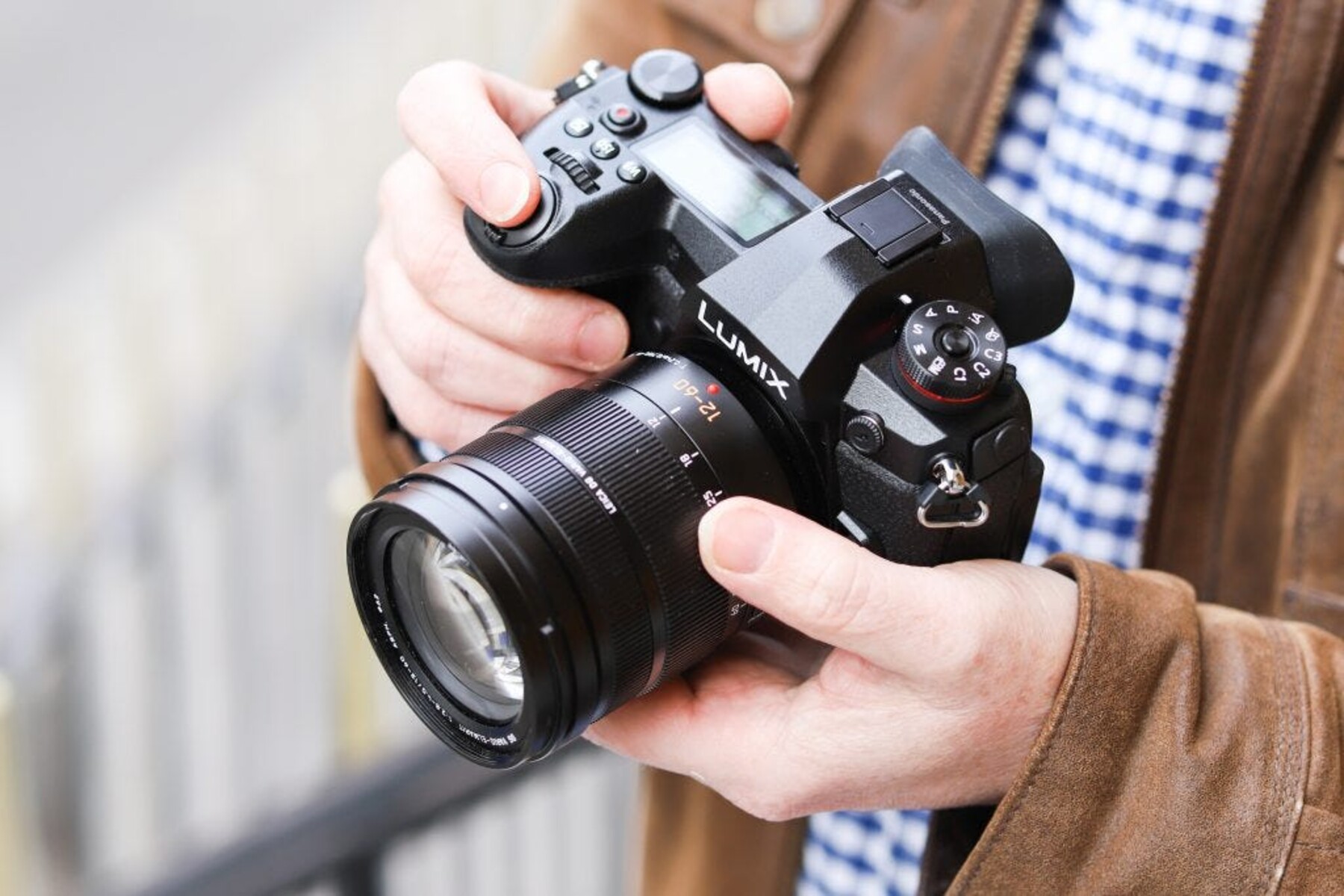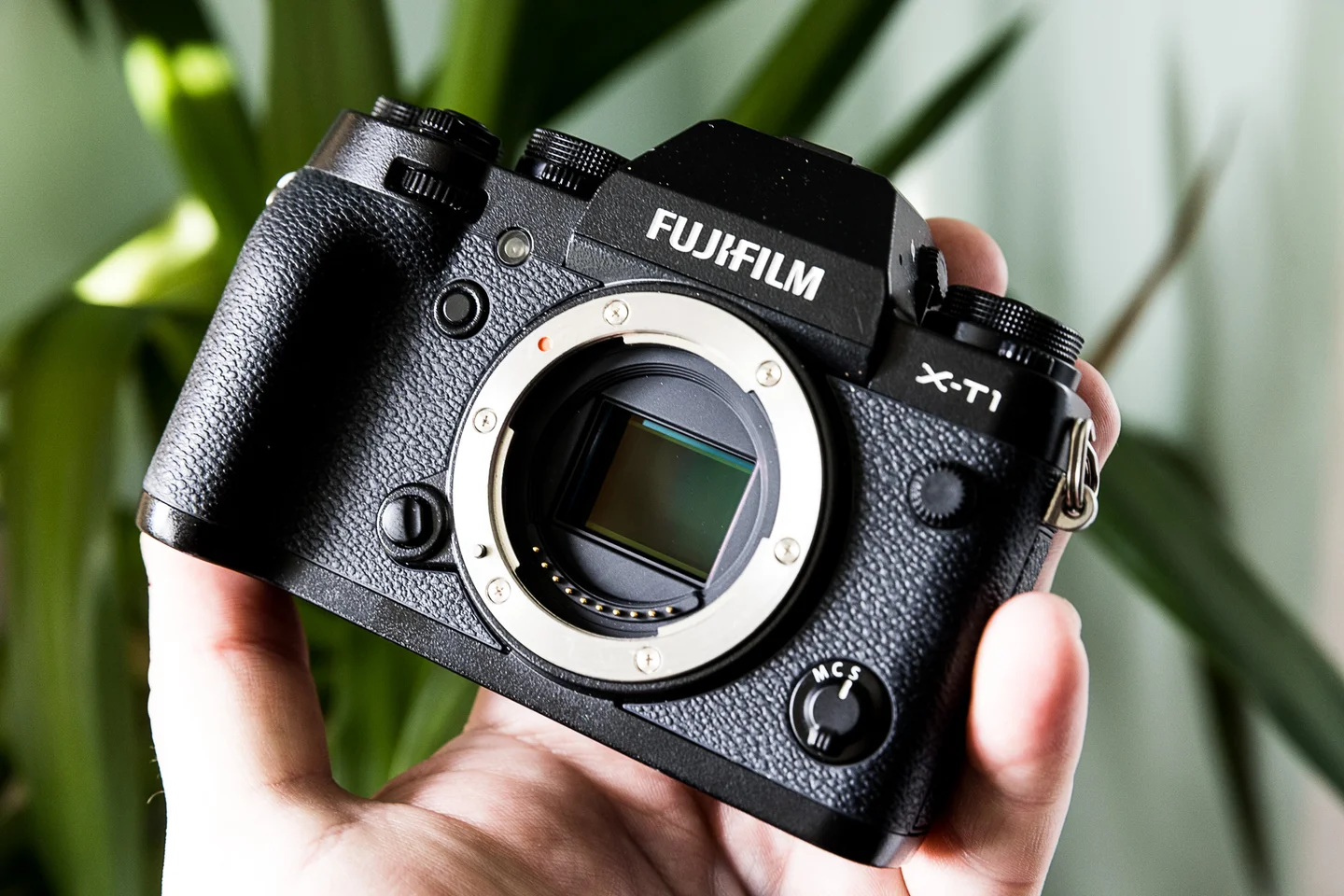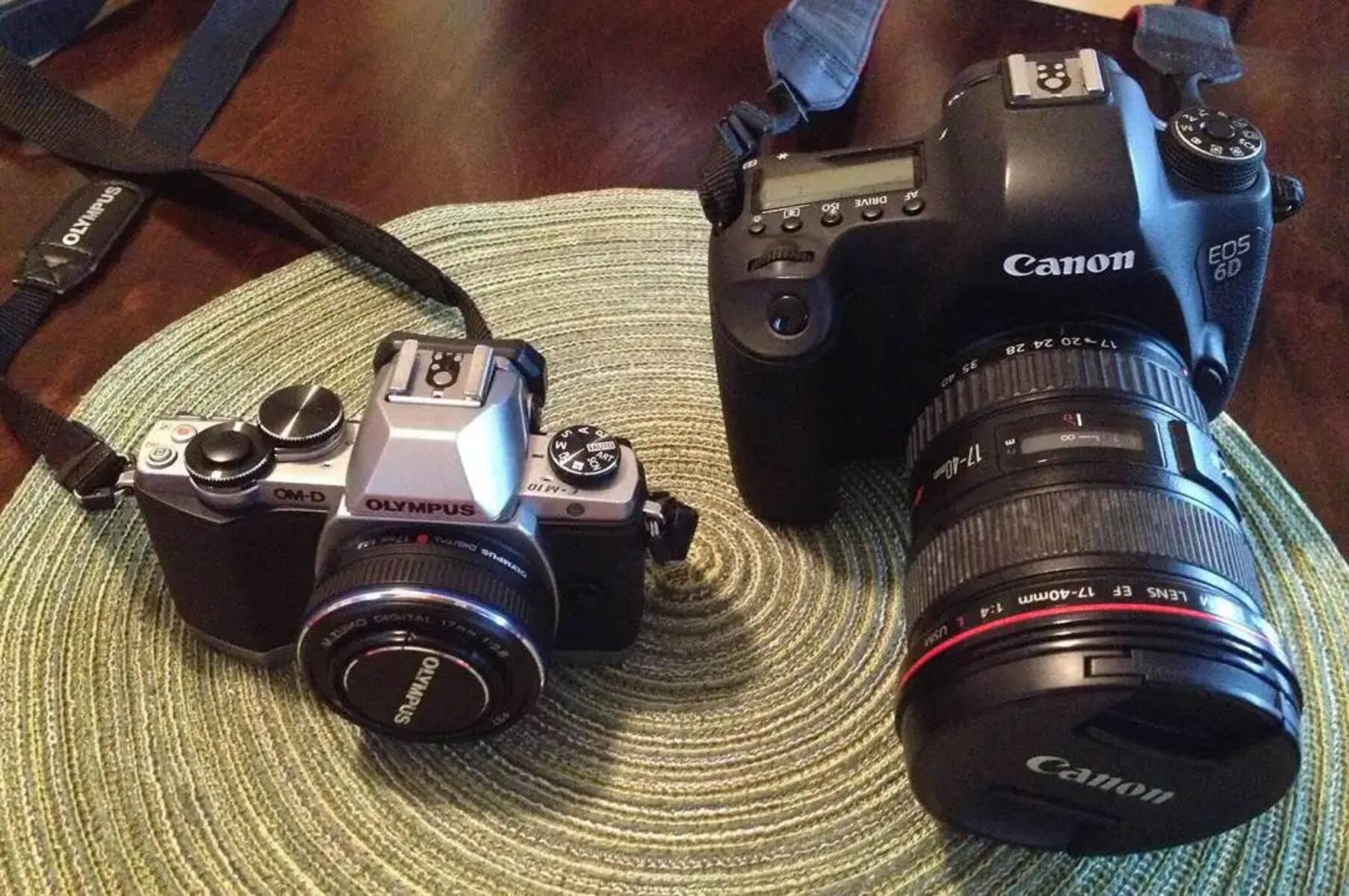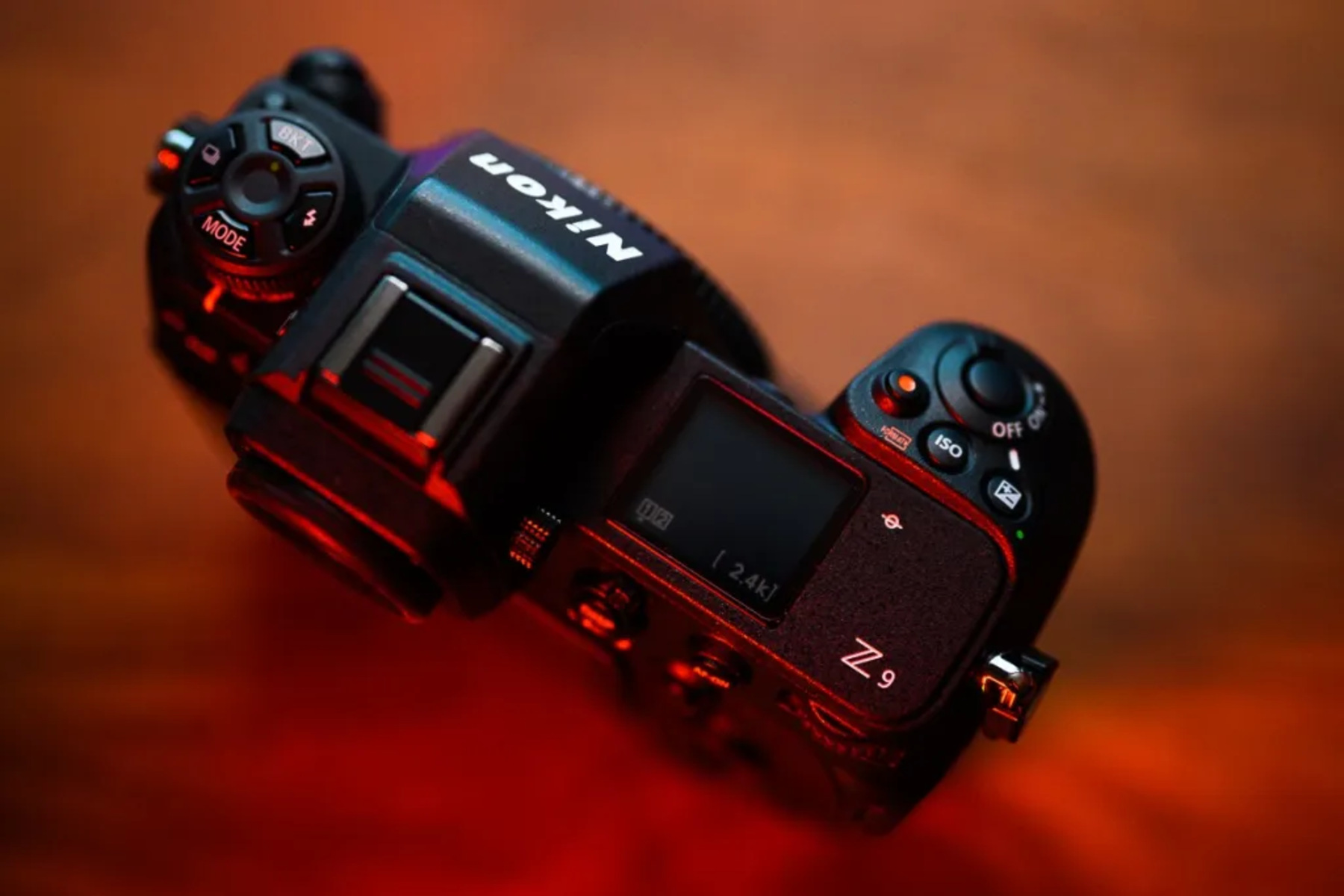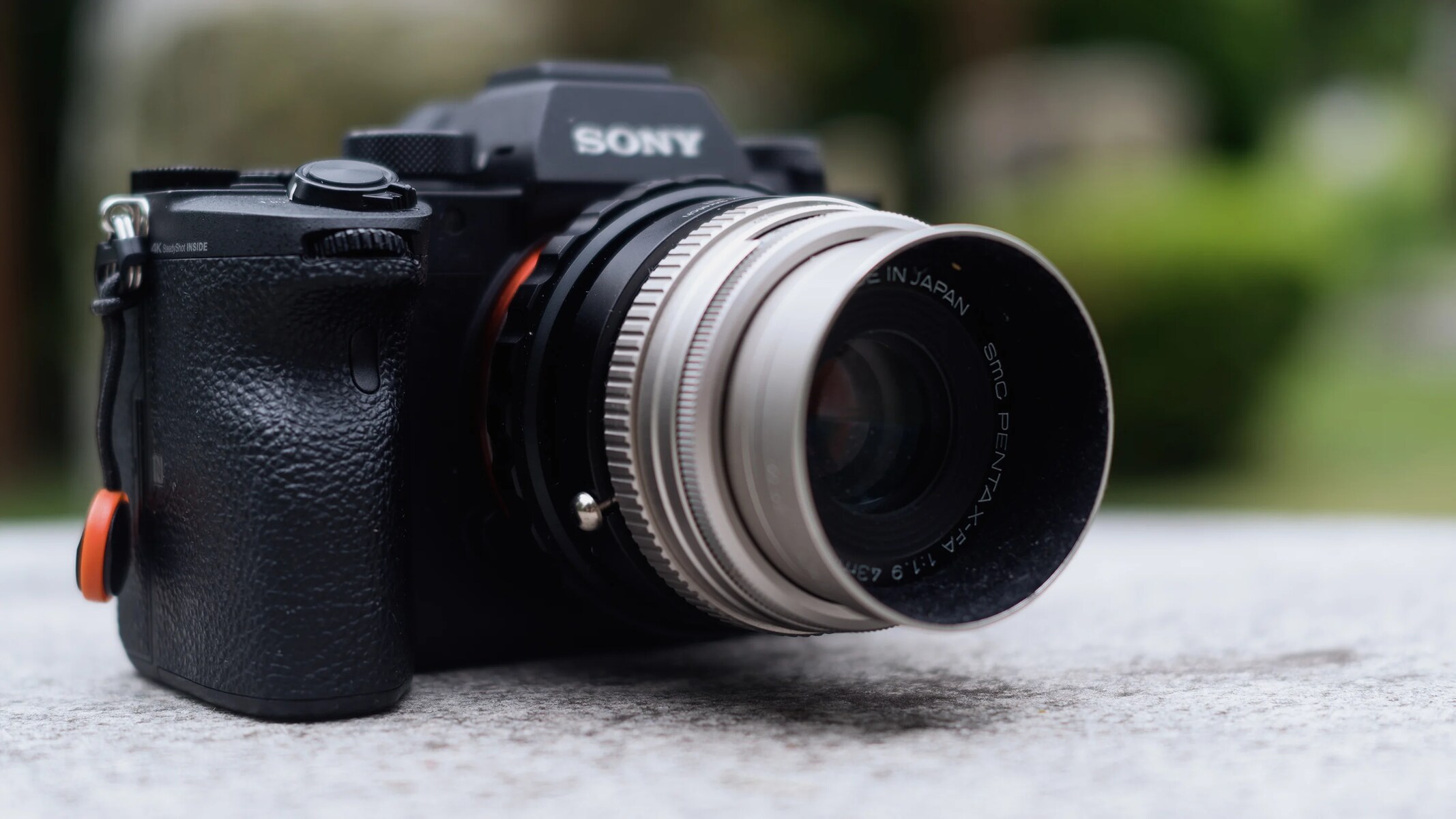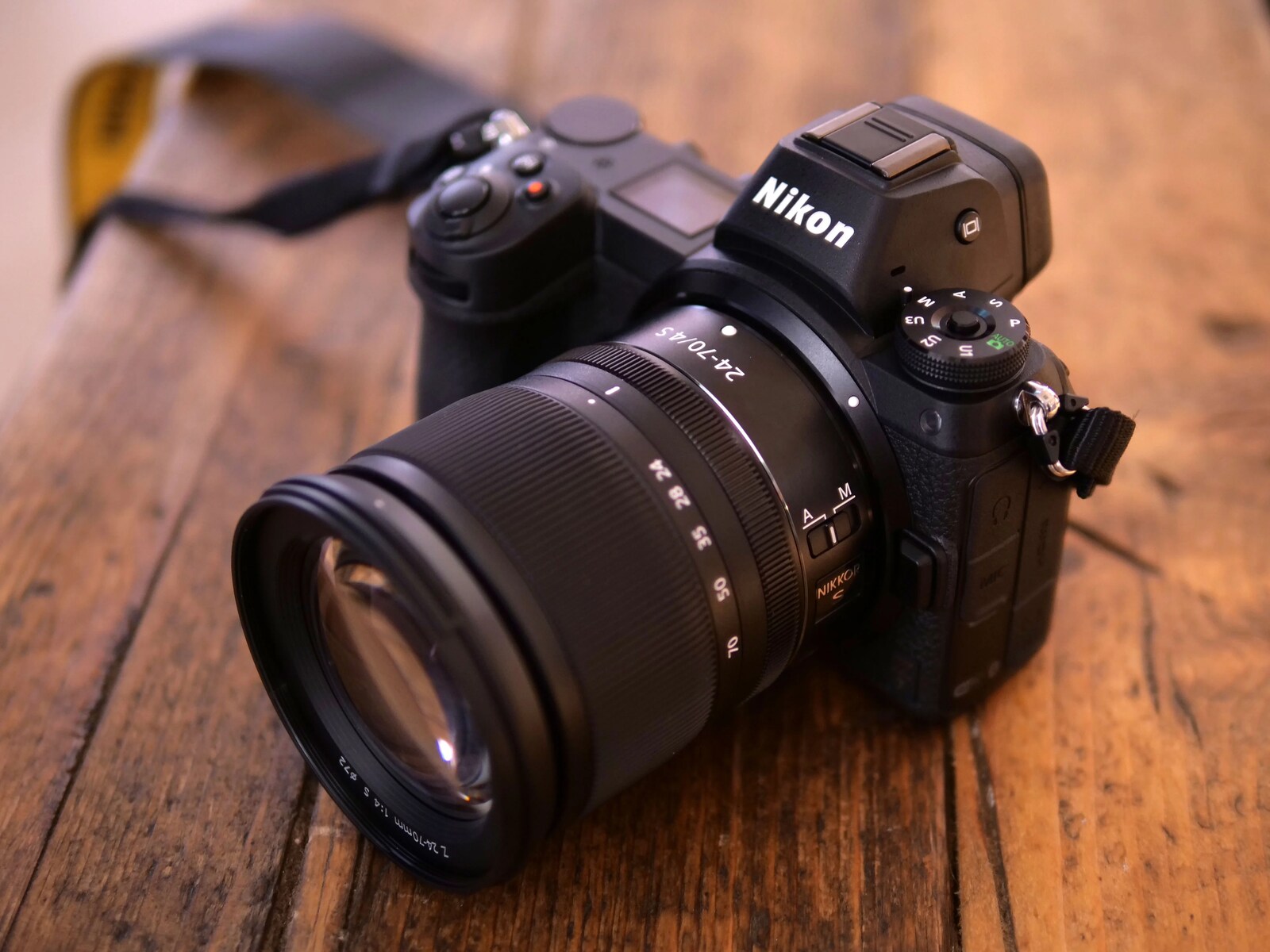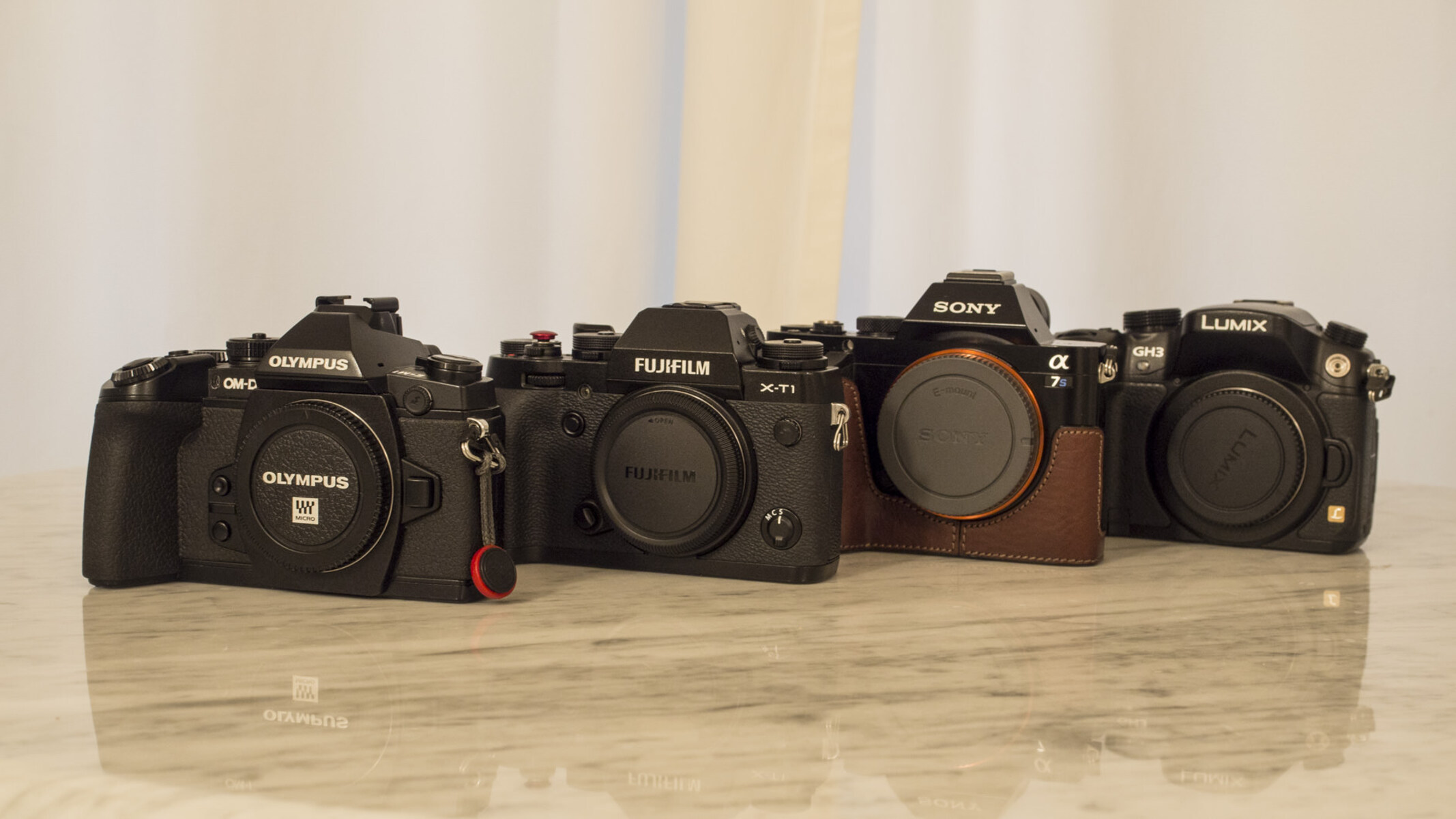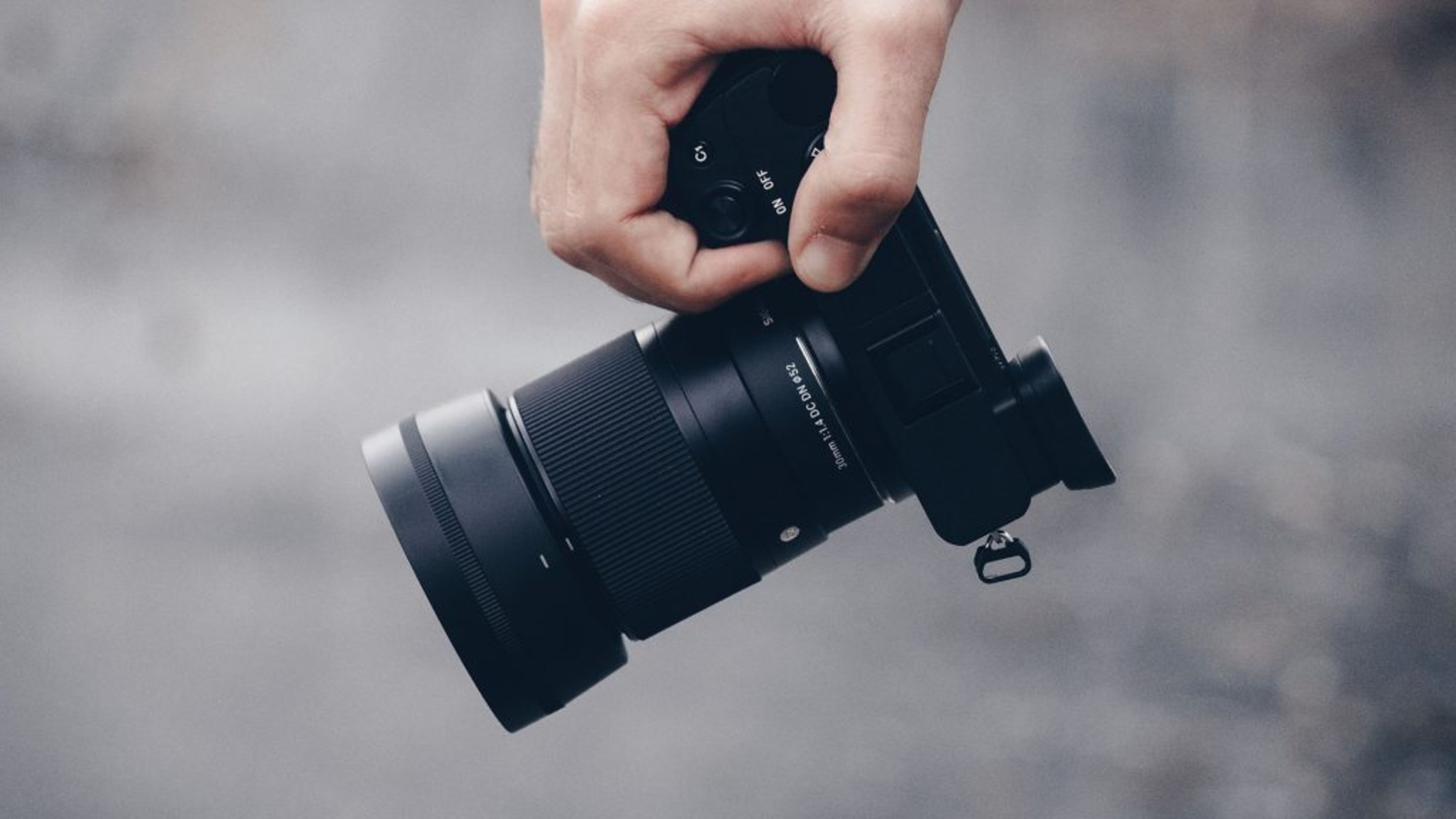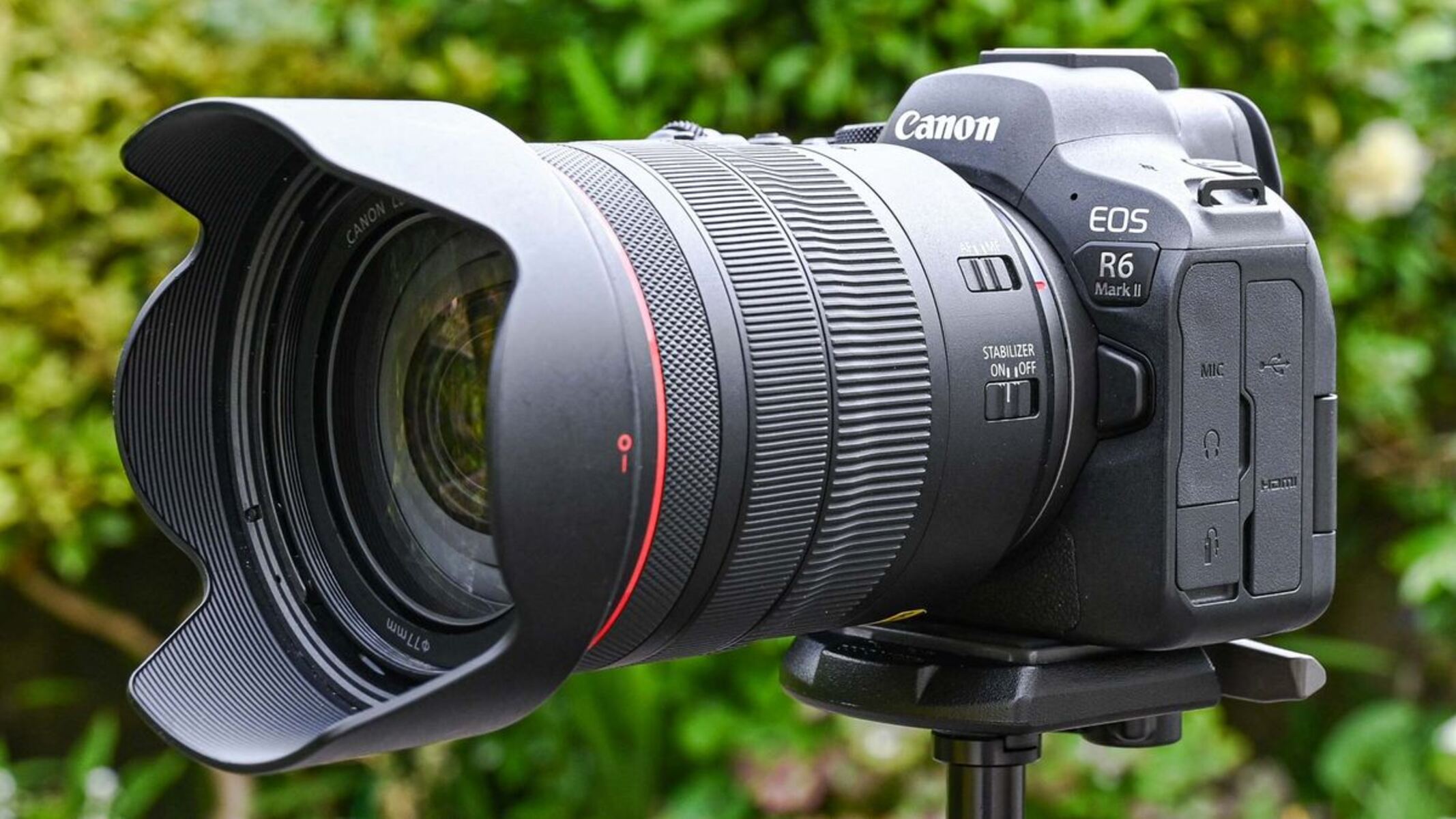Introduction
Welcome to the exciting world of mirrorless cameras! Whether you're a photography enthusiast, a professional, or a beginner looking to delve into the realm of digital photography, mirrorless cameras offer a compact, versatile, and innovative alternative to traditional DSLRs. In this guide, we'll explore the fundamentals of using a mirrorless camera, from understanding its basic principles to mastering advanced shooting techniques and post-processing tips.
As the name suggests, mirrorless cameras, also known as compact system cameras (CSC), differ from DSLRs in their design and functionality. Unlike DSLRs, which employ a complex system of mirrors to reflect light into an optical viewfinder, mirrorless cameras feature a digital display that directly shows the image captured by the image sensor. This streamlined design not only reduces the camera's bulk but also allows for a more compact and lightweight body, making mirrorless cameras an ideal choice for photographers on the go.
In this guide, we'll cover essential topics such as selecting the right lenses for various photography genres, mastering manual settings to achieve optimal exposure and creative effects, utilizing advanced autofocus features for precision and speed, and harnessing the power of electronic viewfinders for a seamless shooting experience. Additionally, we'll delve into exploring creative shooting modes that enable you to unleash your artistic vision and provide valuable post-processing and editing tips to enhance your images.
Whether you're transitioning from a DSLR to a mirrorless camera or embarking on your photography journey with a mirrorless system, this guide will equip you with the knowledge and skills to maximize the potential of your mirrorless camera and elevate your photography to new heights. So, let's embark on this enlightening journey and unlock the boundless possibilities offered by mirrorless cameras!
Understanding the Basics of a Mirrorless Camera
Before delving into the intricacies of using a mirrorless camera, it’s essential to grasp the fundamental principles that set these innovative devices apart from traditional DSLRs. At the core of a mirrorless camera is its unique design, which eliminates the need for a complex mirror and optical viewfinder system, resulting in a more streamlined and compact form factor.
One of the defining features of a mirrorless camera is its electronic viewfinder (EVF) or rear LCD screen, which directly displays the image captured by the camera’s sensor in real time. This direct digital representation provides a live preview of the image, allowing photographers to assess exposure, composition, and depth of field before capturing the shot. Additionally, the absence of a mirror mechanism contributes to the reduction in camera size and weight, making mirrorless cameras highly portable and well-suited for travel and on-the-go photography.
Another key aspect of mirrorless cameras is their utilization of contrast-detection or phase-detection autofocus systems, often integrated directly into the camera’s sensor. This advanced autofocus technology enables swift and accurate focusing, particularly beneficial for capturing fast-moving subjects or achieving precise focus in challenging lighting conditions.
Furthermore, mirrorless cameras are renowned for their compatibility with a diverse range of interchangeable lenses, catering to various photographic genres and creative preferences. From wide-angle and telephoto lenses to macro and prime lenses, the versatility offered by interchangeable lens systems empowers photographers to explore and experiment with different perspectives, focal lengths, and artistic expressions.
By understanding the basic components and functionalities of a mirrorless camera, photographers can leverage these features to their advantage, harnessing the compact design, electronic viewfinder, advanced autofocus capabilities, and lens versatility to capture stunning images in diverse shooting scenarios. With this foundational knowledge in place, let’s proceed to explore the essential considerations for selecting the right lenses to complement your mirrorless camera system.
Choosing the Right Lenses
When it comes to maximizing the potential of your mirrorless camera, selecting the right lenses is paramount. The versatility and adaptability of mirrorless cameras are exemplified through their compatibility with an extensive array of interchangeable lenses, catering to diverse photography genres and creative preferences.
One of the primary advantages of mirrorless camera systems is their compact size, which extends to the lenses designed specifically for these cameras. The reduced flange distance in mirrorless cameras allows for smaller and lighter lenses, enhancing portability without compromising optical performance. Whether you’re drawn to landscape photography, portrait work, macro imaging, or street photography, there is a wealth of lenses tailored to meet your specific needs.
For landscape and architectural photography, wide-angle lenses are indispensable, enabling photographers to capture expansive vistas, dramatic perspectives, and intricate details with exceptional clarity and depth. The wide field of view offered by these lenses allows for immersive compositions and emphasizes the grandeur of natural and urban landscapes.
Portrait photographers often gravitate toward prime lenses with wide apertures, such as 50mm or 85mm lenses, renowned for their ability to produce captivating bokeh and achieve exquisite subject isolation. The shallow depth of field and creamy, blurred backgrounds attained with these lenses accentuate the subject, resulting in striking and emotive portraits.
Macro lenses, designed for close-up photography, are ideal for capturing intricate details, textures, and patterns in subjects such as flowers, insects, and small objects. These specialized lenses enable photographers to explore a miniature world, revealing the beauty and intricacy often unseen by the naked eye.
Street photographers may opt for compact, lightweight prime lenses or versatile zoom lenses, offering flexibility and discreetness while navigating urban environments and capturing candid moments. The portability and inconspicuous nature of these lenses facilitate unobtrusive street photography, allowing photographers to document authentic scenes with ease.
By carefully considering the specific requirements of your photographic pursuits and investing in lenses that complement your creative vision, you can unlock the full potential of your mirrorless camera, expanding your artistic repertoire and capturing compelling imagery with precision and artistry.
Mastering Manual Settings
Embracing the art of photography entails mastering the manual settings of your mirrorless camera to exercise full creative control and achieve optimal exposure and artistic effects. While automatic and semi-automatic shooting modes offer convenience, delving into manual settings empowers photographers to tailor each aspect of their images to their exact specifications.
One of the fundamental manual settings to familiarize yourself with is the exposure triangle, comprising aperture, shutter speed, and ISO. Understanding the interplay between these three elements is essential for manipulating light, depth of field, and motion in your photographs. By adjusting the aperture, you can control the depth of field, determining the extent of focus in the image, while the shutter speed dictates the amount of motion blur or freeze action. Additionally, the ISO setting influences the camera’s sensitivity to light, crucial for achieving well-exposed images in various lighting conditions.
Furthermore, exploring white balance settings allows photographers to achieve accurate color reproduction and convey the mood and atmosphere of a scene. Whether adjusting for warm, golden hues during sunset or cool, blue tones in overcast conditions, mastering white balance empowers photographers to evoke the desired emotional impact in their images.
Manual focusing is another indispensable skill for photographers seeking precision and creative control. While autofocus systems are highly advanced, certain scenarios, such as macro photography or selective focusing, benefit from the meticulous precision offered by manual focus. Familiarizing yourself with your camera’s manual focus assist features, such as focus peaking or magnification, facilitates accurate and efficient manual focusing, ensuring tack-sharp results.
Additionally, delving into exposure compensation enables photographers to fine-tune the exposure in challenging lighting situations, such as high-contrast scenes or backlit subjects. By adjusting the exposure compensation, photographers can override the camera’s metering system to achieve the desired brightness or darkness in their images, preserving highlight and shadow detail with precision.
By mastering manual settings, photographers can transcend the limitations of automatic modes, unleashing their creativity and technical prowess to capture images that authentically reflect their artistic vision. The next step in harnessing the full potential of your mirrorless camera involves leveraging its advanced autofocus features to achieve precision and speed in capturing fleeting moments and dynamic subjects.
Utilizing Autofocus Features
The advanced autofocus capabilities of mirrorless cameras empower photographers to achieve swift and precise focusing, enhancing the efficiency and accuracy of capturing dynamic scenes and fleeting moments. Understanding and harnessing the diverse autofocus features of your mirrorless camera is instrumental in elevating the quality of your images and expanding your creative possibilities.
One of the key advantages of mirrorless cameras is their integration of contrast-detection and phase-detection autofocus systems directly into the image sensor. This hybrid autofocus system enables rapid and accurate focusing, particularly beneficial for capturing moving subjects, tracking motion, and achieving sharp focus in challenging lighting conditions.
Furthermore, many mirrorless cameras offer sophisticated autofocus modes, such as continuous autofocus (AF-C) and predictive tracking, designed to seamlessly track and maintain focus on subjects in motion. Whether photographing sports, wildlife, or lively events, these advanced autofocus modes ensure that moving subjects remain sharp and well-defined, allowing photographers to preserve decisive moments with precision.
Additionally, the implementation of eye detection and face detection autofocus in mirrorless cameras enhances portraiture and human subjects photography, enabling the camera to automatically identify and focus on the subject’s eyes or face. This feature is invaluable for achieving captivating and expressive portraits, ensuring that the subject’s eyes, often regarded as the window to the soul, are rendered with striking clarity and detail.
Moreover, the advent of advanced autofocus algorithms and artificial intelligence in modern mirrorless cameras has revolutionized the speed and accuracy of focusing, making them well-suited for a diverse range of photographic genres. From low-light conditions to fast-paced action, the responsive and reliable autofocus performance of mirrorless cameras empowers photographers to confidently capture decisive moments with unparalleled precision.
By familiarizing yourself with the autofocus features and modes of your mirrorless camera, you can optimize its performance to suit your specific photographic pursuits, ensuring that every frame is impeccably focused and visually compelling. The next aspect of mastering your mirrorless camera involves harnessing the benefits of electronic viewfinders for a seamless and immersive shooting experience.
Taking Advantage of Electronic Viewfinder
The electronic viewfinder (EVF) of a mirrorless camera serves as a pivotal component, offering numerous advantages that enhance the shooting experience and facilitate precise composition and exposure assessment. Unlike traditional DSLRs, which employ optical viewfinders, mirrorless cameras feature electronic viewfinders that present a live, digital preview of the scene, providing photographers with a wealth of valuable information and tools to refine their images.
One of the primary benefits of an electronic viewfinder is its ability to display real-time exposure adjustments, enabling photographers to gauge the impact of aperture, shutter speed, and ISO settings directly through the viewfinder. This immediate feedback allows for accurate exposure assessment and empowers photographers to make informed decisions regarding exposure compensation and creative adjustments without diverting their gaze from the scene.
Moreover, electronic viewfinders offer a high degree of customization, allowing photographers to overlay essential shooting information, such as histogram, grid lines, electronic level, and focus peaking, directly onto the viewfinder display. These overlays aid in precise composition, alignment, and focus accuracy, ensuring that every frame is meticulously crafted with attention to detail and technical precision.
Additionally, the electronic viewfinder provides a seamless platform for reviewing images and navigating menu settings without interrupting the shooting process. By utilizing the EVF as a versatile tool for image playback and menu navigation, photographers can streamline their workflow and maintain focus on the creative aspects of photography, minimizing distractions and enhancing efficiency.
Furthermore, the electronic viewfinder of a mirrorless camera offers a natural and immersive shooting experience, particularly in challenging lighting conditions. The ability to preview the exact exposure and depth of field in real time, irrespective of ambient lighting, empowers photographers to confidently compose and capture scenes with precision, even in low-light environments or high-contrast situations.
By capitalizing on the benefits of the electronic viewfinder, photographers can elevate their shooting experience, refine their compositions with precision, and maintain an unwavering focus on the creative aspects of image-making. The next step in harnessing the full potential of your mirrorless camera involves exploring the diverse creative shooting modes that enable you to unleash your artistic vision and expand your expressive capabilities.
Exploring Creative Shooting Modes
Modern mirrorless cameras are equipped with an array of creative shooting modes and innovative features that empower photographers to experiment with diverse artistic expressions and elevate their imagery beyond traditional shooting parameters. These modes, often accessible through the camera’s mode dial or menu system, offer a wealth of creative tools and effects, providing photographers with the flexibility to infuse their images with unique visual styles and emotive qualities.
One of the popular creative shooting modes found in mirrorless cameras is the “Art” or “Creative” mode, which offers a selection of artistic filters and effects that can be applied in real time to produce stylized images. From expressive monochrome renditions to dynamic color enhancements and textured overlays, these modes provide a platform for photographers to imbue their images with distinct moods and visual interpretations, expanding the creative potential of their photography.
Furthermore, mirrorless cameras often feature multiple exposure modes, allowing photographers to superimpose multiple images or frames to create ethereal and visually captivating compositions. By blending different scenes, textures, or subjects into a single frame, photographers can craft compelling narratives and evoke a sense of surrealism, transcending the boundaries of traditional single-frame photography.
Another noteworthy creative shooting mode is the “Panorama” mode, which enables photographers to seamlessly capture expansive, wide-angle vistas by panning the camera across the scene. This mode automatically stitches together multiple frames to produce a panoramic image, offering a captivating and immersive portrayal of sweeping landscapes, urban skylines, and architectural marvels.
Moreover, mirrorless cameras often feature in-camera multiple aspect ratios, allowing photographers to capture images in non-standard dimensions, such as square or panoramic formats. This versatility enables creative framing and composition, offering photographers the freedom to explore unconventional visual aesthetics and tailor their compositions to suit the subject matter and narrative intent.
By venturing into the realm of creative shooting modes, photographers can transcend traditional photography conventions, infusing their imagery with artistic flair and emotive resonance. The next phase of maximizing your mirrorless camera’s potential involves post-processing and editing techniques that refine and enhance your captured images, elevating them to new levels of visual impact and storytelling prowess.
Post-Processing and Editing Tips
Post-processing and editing play a pivotal role in refining and enhancing the visual impact of images captured with a mirrorless camera. Whether you’re aiming to fine-tune exposure, color balance, or composition, or seeking to unleash your creativity through artistic manipulations, employing effective post-processing techniques can elevate your photography to new heights.
One of the fundamental aspects of post-processing involves refining exposure and tonal adjustments to optimize the overall brightness, contrast, and dynamic range of an image. Utilizing software tools to adjust highlights, shadows, and midtones enables photographers to achieve balanced and visually compelling tonalities, enhancing the depth and dimension of their photographs.
Furthermore, color correction and white balance adjustments are instrumental in achieving accurate and evocative color renditions, ensuring that the hues and tones in your images resonate authentically with the scene’s visual characteristics. By fine-tuning color temperature, tint, and vibrancy, photographers can evoke specific moods and atmospheres, infusing their images with emotional resonance and visual allure.
Another essential aspect of post-processing involves harnessing selective adjustments and local adjustments to refine specific areas of an image, such as enhancing details, smoothing skin tones, or applying targeted color enhancements. These precise adjustments enable photographers to direct the viewer’s attention and accentuate the visual impact of key elements within the frame, fostering a cohesive and compelling visual narrative.
Moreover, embracing creative editing techniques, such as black and white conversions, split toning, and artistic filters, allows photographers to imbue their images with distinct visual styles and emotive qualities. By exploring the creative potential of editing tools, photographers can transcend traditional representations, infusing their imagery with a personalized and evocative aesthetic.
Additionally, post-processing offers an opportunity for photographers to refine composition and framing through cropping, straightening, and perspective adjustments. These refinements enable photographers to fine-tune the visual balance and narrative flow of their images, ensuring that every element within the frame contributes to a cohesive and impactful visual story.
By embracing effective post-processing and editing techniques, photographers can enhance the expressive potential of their images, refining and amplifying their visual impact. This transformative phase in the photographic process empowers photographers to articulate their creative vision with precision and finesse, culminating in imagery that resonates with depth and narrative resonance. With these post-processing insights in mind, you are well-equipped to embark on a journey of visual storytelling and artistic exploration with your mirrorless camera.
Conclusion
Congratulations on embarking on a comprehensive exploration of the capabilities and creative potential of mirrorless cameras. Throughout this guide, we’ve delved into the foundational principles of mirrorless photography, from understanding the unique design and features of mirrorless cameras to mastering manual settings, harnessing advanced autofocus capabilities, and leveraging the benefits of electronic viewfinders and creative shooting modes. Additionally, we’ve explored the transformative impact of post-processing and editing techniques in refining and enhancing the visual impact of your images.
By immersing yourself in the intricacies of mirrorless photography, you’ve gained valuable insights into the versatile and innovative capabilities of these compact yet powerful imaging tools. The compact form factor, advanced autofocus systems, electronic viewfinders, and diverse creative shooting modes collectively empower photographers to transcend traditional boundaries, infuse their imagery with artistic flair, and articulate their creative vision with precision and finesse.
As you continue your journey with a mirrorless camera, remember that experimentation, exploration, and continual learning are integral to unlocking the full potential of your photographic pursuits. Whether you’re capturing breathtaking landscapes, compelling portraits, dynamic action scenes, or intricate macro details, the adaptability and creative flexibility of mirrorless cameras provide a canvas for boundless artistic expression.
By honing your technical skills, embracing creative experimentation, and refining your imagery through post-processing, you are poised to embark on a captivating odyssey of visual storytelling and artistic exploration. Every click of the shutter presents an opportunity to capture moments of beauty, emotion, and narrative significance, and your mirrorless camera stands as a reliable and innovative companion in this creative endeavor.
With the knowledge and insights gained from this guide, you are well-equipped to navigate the dynamic landscape of digital photography, harnessing the transformative capabilities of mirrorless cameras to craft imagery that resonates with depth, emotion, and visual allure. As you venture forth, may your photographic journey be marked by discovery, inspiration, and the boundless joy of capturing moments that transcend words and speak directly to the heart.







